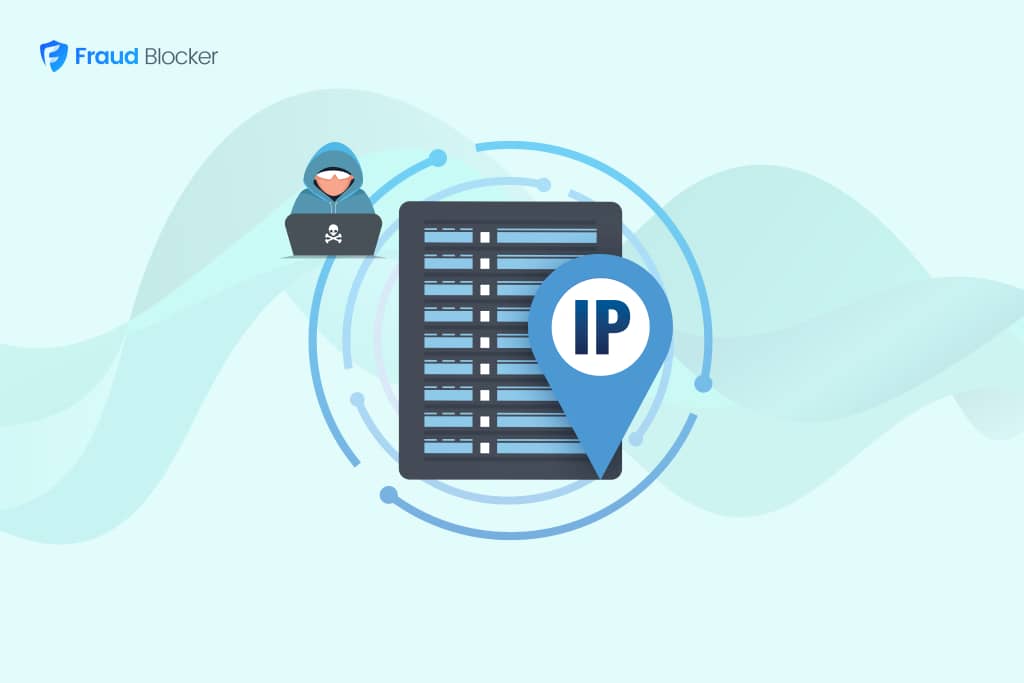
NEW New feature: Verify & block fake emails

We improve your ad performance by blocking click fraud and fake emails

Click fraud is costing advertisers billions in loses. Learn more here.

Click fraud is costing advertisers billions in loses. Learn more here.

Much like a postal address ensures the mail reaches the right doorstep, an IP address guarantees data packets find their way to the correct digital device.
However, IP addresses can become tools for deception. By impersonating another computer system, cybercriminals can carry out malicious actions and bypass IP address authentication to breach all kinds of systems and networks. And with implications for businesses, ranging from operational risks to marketing anomalies, understanding and avoiding IP spoofing is a key strategy to prevent many forms of internet fraud.
An IP (Internet Protocol) address is the unique address for your internet connected device on a specific network. This is usually made up of four or five sections of up to three numbers, separated by periods (IPv4) or colons (IPv6).
A standard (IPv4) IP address will look something like this:
192.12.345.67
Typically, the first three sections identify the network, while the final sections identify the device.
An IPv6 address is slightly more complex, with a longer character stream and more characters (up to 39).
An IPv6 address might look like this:
268e:a812:2b6c:140a:c7d7:6daf:b26a:7e82
IPv4 is the ‘standard’ address used with the majority of IP addresses, while IPv6 is a newer one that has been slow to adapt.
Your devices IP address will change depending on where you connect. So for example, if you connect your phone to your home wi-fi, you will have a specific IP address. But then if you take that same device to a coffee shop and connect via the wi-fi there, you’ll have a totally different IP address. And if you use your mobile network, again, your IP address will be different.
But the IP address is a crucial part of internet traffic. Without IP addresses, sending and receiving data online would be like trying to send a letter without a mailing address – directionless and futile.
IP spoofing is the manipulation, or outright falsification, of an IP packet by the sender. It is usually performed using either a VPN, proxy or within software such as malware.
The perpetrator sends a request to a server using an IP address indicating that they are a trusted source. This deceptive practice can trick the receiving system or network into accepting the incoming traffic as legitimate, a process often used by bots or devices infected with malware.
This obfuscation allows the fraudulent party to hide their true identity, enabling them to bypass IP address-based security measures, or impersonate another device.
Attackers craft IP packets with a forged source IP address to launch a range of malicious activities, which can include the merely annoying, such as spam attacks, to the deeply malicious such as fraud or serious cyber attacks.

Some of the most common uses of IP spoofing include:
While these are some of the most common forms of online fraud or hacker attacks, IP spoofing is used in almost all forms of cyber crime. From spam injection to ransomware, IP spoofing helps hackers stay hidden and carry out their activity.
A big problem with IP spoofing is that it does not leave external signs of tampering and can appear legitimate from the outside. However, certain signs and tools can help businesses detect manipulated IP addresses:
Protecting against IP spoofing requires a multifaceted approach. Here are a few ideas to stop IP spoofing:
Implementing ingress (inbound) filtering on networks can prevent packets with incorrect source IP addresses from entering the network. This is achieved through packet filtering, which analyzes incoming traffic to ensure it is legitimate.
Similarly, egress (outbound) filtering ensures your outgoing traffic has legitimate internal IP addresses, reducing the chance of your network being used for spoofing.
Egress filtering also prevents internal attackers from launching IP spoofing attacks against external machines by ensuring that only legitimate internal IP addresses are used in outgoing traffic.
Using secure, authenticated connections like SSL/TLS for websites can help protect against MitM attacks, spam injection and other spoofing-related attacks.
Continuous monitoring of network traffic and regular analysis of logs can help quickly identify and mitigate potential spoofing activities.
Attackers may impersonate a trusted IP address in an attempt to bypass network security measures, and exploit trust relationships between your machines to carry out spoofing attacks.
If you use a tool to detect IP spoofing, you should also add these suspicious addresses to a blacklist. This prevents these forms of malicious traffic from accessing your databases, ads or network in the future.
It might also be worth managing a “whitelist”, which is a list of trusted IP addresses.
Read about how to how to exclude IP addresses.
IP address spoofing is a common method for ad fraud bots to interact with your ad campaigns. By using a tool to track incoming packets and block spoofed IP addresses, it’s possible to greatly reduce the fake clicks on your ad campaigns.
And considering that fraud affects around 20% of all Google Ads campaigns, blocking bad traffic is a must for business owners or professional marketers.
Fraud Blocker is fast becoming the choice of pro-marketers around the world, with real-time IP address tracking and blacklist management. Stop botnets, click farms, and other malicious traffic on your Google Ads and Facebook Ads – and even export your IP blacklist to other ad networks such as Bing, Adroll and more…
Run a free traffic audit with our 7 day free trial.


